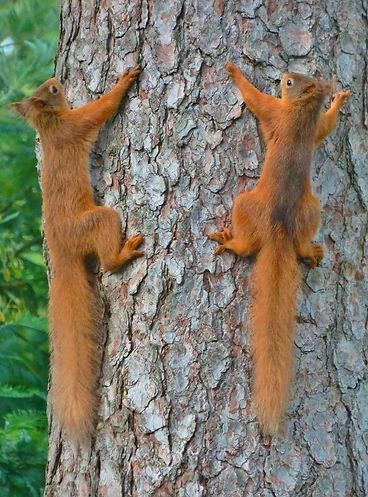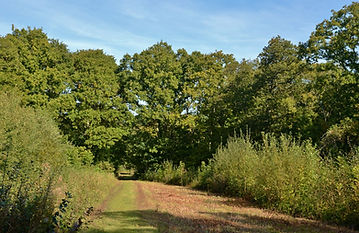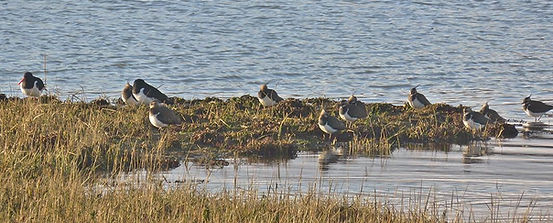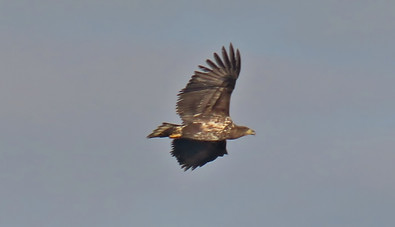
Ashley Whitlock
Hampshire & IOW Butterflies and Moths
Isle of Wight Conservation News

The Large Tortoiseshell is no stranger to the Isle of Wight as it has been seen on many occasions especialy in the spring. The puzzle is where does it breed, there are obviously plenty of Sallow and Poplar and Elm trees dotted about, but no one as far I know has witnessed mating or egg-laying on the Island. I certainly dont think they are releases, or continental specimens. Kent has also had the species being seen in several woods in East Kent, and ive no doubt that there will be more sightings over the next few weeks especailly if this warm weather keeps up.. Picture by kind permission of Nikki Kownacki


Red Squirrels ...race you to the top!

Bluebells on Mottistone Common

Wild Daffodils
.jpg)
Thrift

Mating Small Heaths
%20(1024x682).jpg)
Walters Copse
Isle of Wight Wildlife -
January - August 2021
A personal account of sightings seen by Nikki Kownacki
The year got off to a great start as in January we saw a flock of approx. 40 - 50 Crossbill. They landed on the tree directly in front of us whilst we were walking along the coastal path and started to preen themselves. The red boys and green girls were a wonderful sight. Throughout the winter months see the winter migrants visit the Island and in particular a large number of Brent Geese. These can be found in large flocks at Newtown Creek a site of national importance for this species. They can also be seen all along the Solent in smaller flocks and at Ryde where they can also be seen in large numbers. At both Yarmouth Estuary and Newtown Creek there were flocks of Lapwing along with Black Tailed Godwit, Widgeon and Teal. The largest flock of Lapwing is was at Brading Marshes.
At Freshwater Causeway two Black Swans turned up amongst the numerous Mute Swans to be fed by the locals. A very special visitor that can be seen at both sites is the Spoonbill. Around a dozen were seen this winter. They are large and stunning looking white birds. I also saw a male Hen Harrier very close to us and Marsh Harriers in the Creeks. It’s always good to see the Seals at Newtown Creek - both Grey and Common Seals can be seen. I have also seen one in the sea off Brook Beach this year. My husband was lucky to see a large Dolphin pod whilst sailing off Ventnor. Unfortunately a couple of times there have been dead Porpoises washed ashore. In spring, one of the first natural flowers to be seen are the wild daffodils at Firestone Copse. Then the Bluebells at Mottistone Common put on a good show for several weeks. Later in spring the Common Spotted Orchids can be found growing in fields and hedgerows and then the Pyramidal Orchids give a great show growing in large numbers on the Downs. The Pyramidal Orchid is the County flower of the Isle of Wight. The National Trust and the Wildlife Trust have done a great job of managing their land and encouraging the growth of our wild flowers.
On Mottistone Down and Brook Down there are the early appearances of the Skylarks in doing their spectacular flying displays and unmistakable calls. At Brook Down there was approx. 20 pairs seen on one visit. The Whitethroats and the Stonechats can usually be seen there too and I spotted a Whinchat which must have just come over from Africa on its migration. Later on the Downs I also saw plenty of Linnets and Yellowhammers. On Brook Beach we saw a small group of Whimbrels which were on their passage from Africa to Iceland. This species were found in larger numbers at Newtown Creek.
On a visit to East Wight in Spring I saw three of the White Tailed Sea Eagles that had been released over the past couple of years on the Island. They make a spectacular sight and are known as the flying barn doors. I have seen them in a few locations on the Island now including a couple that flew over our garden being chased by Buzzards. We are very lucky to have them released back on the Island. A late evening walk to Mottistone to see the Nightjars in June was very entertaining. They make some amazing noises and will swoop low over your head clapping their wings. Several were seen that evening. I have also seen them along the coastal path at Bouldnor
At last the first of the Chalk Downland Butterflies make an appearance and then suddenly there are lots of different species to be seen. One of the really early butterflies is the Island’s own Glanville Fritillary which can be seen from early May. They were in large numbers this year along the Downland. On the Coast they were seen a bit later along the coastal path from Compton Chine to Brook. The bad spring weather seemed to hold them back slightly. There were good sightings at Mottistone and Brook Downs of the bright and beautiful Adonis Blue Butterfly. Also, Common Blues, Brown Argus, Small Coppers and Green Hairstreaks with a large amount of Small Blues seen at Brook Down. There were a few Wall Butterflies around earlier in the year and I have started seeing them in the garden again this August.
The woodland butterflies are always good to see but they got off to a very slow start this year - again the bad weather seemed to slow their appearance. But a good number of White Admirals and Silver Washed Fritillaries including Valezina have been seen. A good place to see these Butterflies is Walter’s Copse in Newtown. No sign of a Purple Emperor there though! On my Butterfly Transect there are a very large number of butterflies. It mainly covers heathland but there is woodland as well. There were a small group of Dark Green Fritillaries this year, but none of the Small Pearl Bordered Fritillaries that were found there a few years ago. A particular favourite of mine are the Marbled Whites and to my delight they were the most numerous butterfly on my transect. I had to count them in 5’s at a time with nearly 400 seen on my largest count! There were also a lot of these butterflies to be found in the meadow area of the garden. Early on in the season there were several Painted Ladies and I am still seeing them in August so a good year for our Continental visitors. I also saw the ‘Big 5” Grizzled Skippers, Dingy Skippers, Large Skippers, Small Skippers and Essex Skippers on the Transect with the Small Skipper being extremely numerous this year the largest count being nearly 300. The main butterfly seen in August is the Gatekeeper, again in large numbers. Day flying moths on my Transect include the Silver Y Moths, Six Spot Burnet Moths, Cinnabar Moths, Burnet Companion Moths and Mother Shipton Moths which can all be found in the garden as well.
A couple of interesting moth finds that I have had this year include a Beautiful Marbled Moth - only the eighth seen on the Island and the first in daylight and in Spring. Also a Chalk Carpet Moth - there hasn’t been one seen on the Island since 2018 and only 40 records of them. Another insect always good to see are the Dragonflies and Damselflies. Locally I have had good sightings of the Beautiful Demoiselle which I have also be seen in Walter’s Copse at Newtown. Other sightings include Emperor Dragonflies, Southern Hawkers, Migrant Hawkers and Ruddy Darters along with Common Darters. A Golden-Ringed Dragonfly even made it into the living room! A smaller insect that I haven’t seen previously was the Long-horned Bee which made an appearance in the garden. This is a very small Bee and apparently rare and seen only on the South Coast of the UK. One of the last Butterflies to emerge in the year is the Chalk Hill Blue and I have enjoyed seeing these on the chalk downs of the Island. A great place to see them in their thousands is Arreton Down but they are also numerous at Brook Down, Brading Down and Mottistone Down. On the bird feeders we get the usual tits and the finches including a pair of Bullfinches which have become near regulars. I also like to see the Great Spotted Woodpeckers which love peanuts and the Green Woodpeckers which are very elusive. Plenty of Jays are around as well - these become a bit braver when they have young. A couple of Blackbirds managed to rear 3 broods in our woodshed. Sometimes a Barn Owl will do a fly by in the evening and there has been a pale coloured Buzzard nesting nearby.
Last but not least, I must mention the Red Squirrels. They can be seen all year round and we see them every day in the garden. They love Sunflower seeds and get quite used to you being there and will come down and eat if you are very still though they do complain by banging their feet on a tree and making a strange noise. I like to see the young ones come out and play. We had 5 around the feeders chasing each other around the tree one day. These are one lovely and entertaining constant in an ever changing year of wildlife.



White-Tailed Sea Eagle
